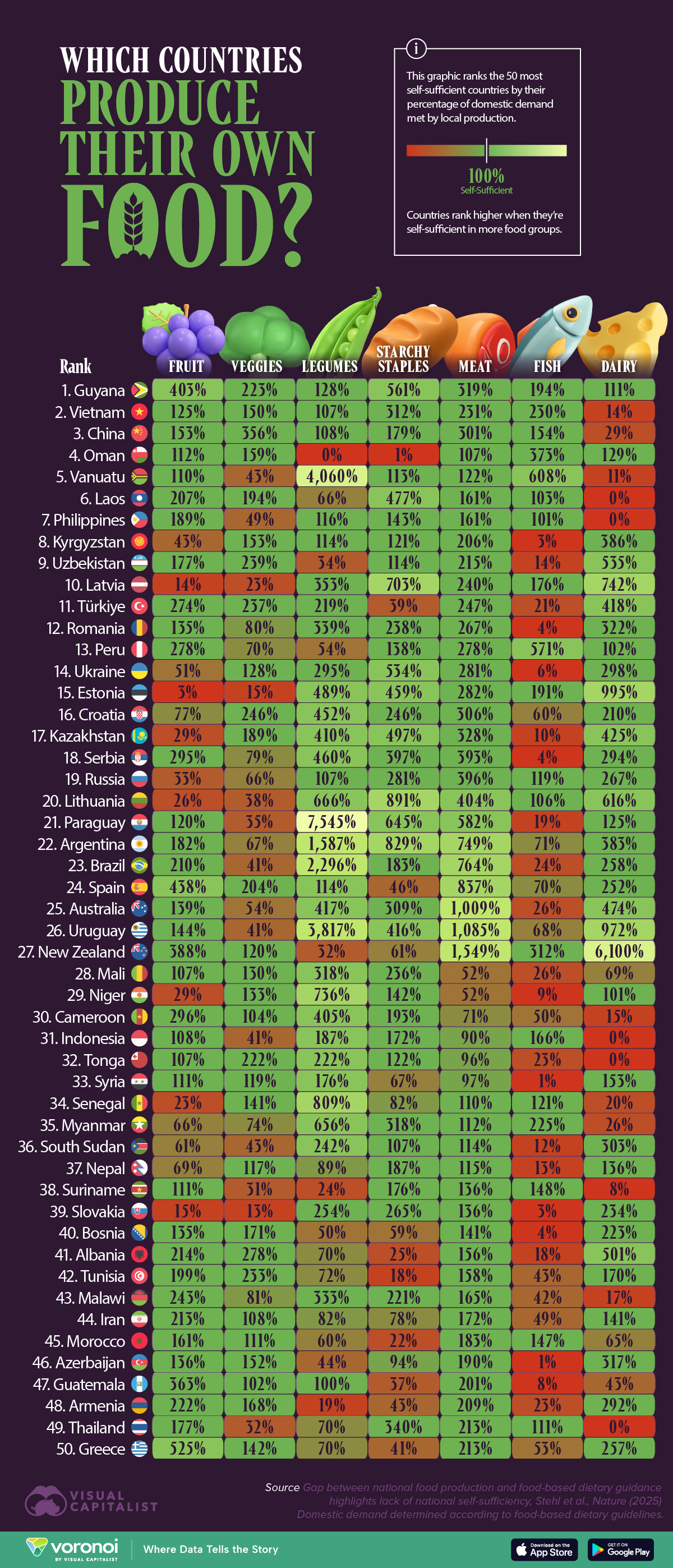Armenia’s Food Production Independence Propels It into the Top 50 Self-Sufficient Nations Worldwide

Armenia Emerges as a Leading Nation in Food Production Independence
Recent findings highlight Armenia’s notable achievement in securing a position among the top 50 countries globally for its food production capabilities. This distinction comes from an extensive evaluation of nations based on their capacity to satisfy domestic demand across crucial categories of nourishment. The study, conducted on a global scale, encompassed 184 countries, employing a detailed comparison across seven fundamental food sectors.
Each sector in the assessment reflects a country’s ability to produce enough to meet internal needs, with a perfect score indicating full independence in that category. Scores exceeding this threshold suggest opportunities for export, while lower results indicate reliance on imports. The analysis offers a quantitative insight into how various regions manage their essential food resources, painting a comprehensive picture of worldwide food autonomy.
Understanding Armenia’s Position in the Global Food Landscape
Armenia’s recognition in this framework is rooted in its agricultural structure which supports a diverse range of food items. The nation's production proficiency spans important categories such as fruits, vegetables, legumes, starch-rich foods, meats, fish, and dairy. The balance across these sectors indicates a strong internal food system that aligns well with the nation's dietary needs and economic opportunities related to food production.
This ranking is significant, especially against the backdrop of global challenges like supply chain disruptions and escalating food import costs. Armenia’s ability to generate sufficient food internally offers strategic advantages, enhancing food security and reducing vulnerability to external shocks.
Key Factors and Milestones in Armenia’s Food Production Success
The country’s agricultural foundation has long benefited from its favorable environmental conditions and traditional farming practices, which have evolved over time to improve efficiency. Fruit and vegetable cultivation occupy a prominent place, supported by fertile soils and climatic factors suitable for a variety of crops. Similarly, the livestock sector contributes to balanced meat and dairy availability.
These accomplishments reflect incremental progress fostered by targeted policies and investments aimed at boosting agricultural productivity. Armenia’s integration of traditional knowledge with modern techniques in crop and animal husbandry has facilitated a steady increase in self-reliance.
Moreover, the distribution of production capacities across diverse food groups mitigates risks associated with over-dependence on any single category. This multifaceted approach is crucial in sustaining the country’s food autonomy and developing export potential in select categories.
Implications and Outlook for Continued Food Independence
Maintaining and expanding this status requires ongoing attention to agricultural innovation, infrastructure development, and market accessibility. Enhancements in irrigation, storage, and supply chain logistics can further strengthen production and reduce losses. Additionally, fostering sustainable farming practices will help ensure long-term viability of food resources.
Armenia’s place among the world’s most food-independent countries serves as an encouraging indicator for regional resilience. It also exemplifies how balanced agricultural diversification can contribute to national stability and economic growth. As global food demands evolve, such models of integrated production systems will likely gain increased importance.
This recognition, based on a robust international comparative study, underscores the country’s capacity to meet the nutritional needs of its population through domestic means. It also provides a foundation for future strategies aimed at enhancing food security and promoting agricultural innovation aligned with global standards.
